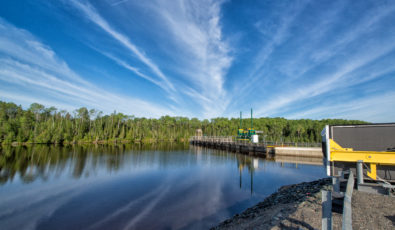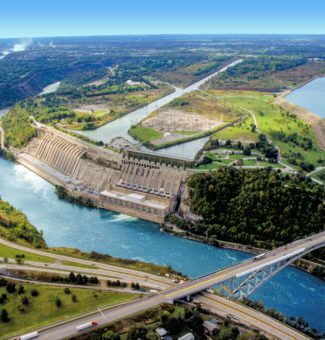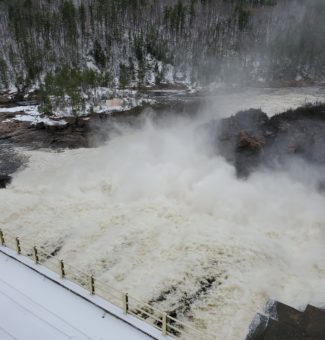OPG’s hydro operations managing low water conditions across province
This spring, OPG’s water management staff and hydro operations have been busy managing low water conditions in river systems across the province.

A much earlier and milder freshet, the annual spring thaw, coupled with a lack of significant precipitation have contributed to dryer than normal conditions in many regions.
“OPG’s water managers have to deal with a number of factors that can change quickly,” said Tom Aaltomaa, a First Line Manager of Operations in OPG’s Northwest Operations. “While we rely on long-term weather forecasts and other data, at the end of the day, we really have to work with Mother Nature. And what nature brings each year can be unpredictable.”
Snow surveys taken throughout the winter across watersheds on which OPG operates have yielded normal to below-normal snowpack readings, indicating the potential for less runoff from melting snow. In March and April, many regions were also below average precipitation for this time of year.
To mitigate low-water conditions, OPG is taking a number of strategic actions.
“While we rely on long-term weather forecasts and other data, at the end of the day, we really have to work with Mother Nature. And what nature brings each year can be unpredictable.”Tom Aaltomaa, First Line Manager of Operations in OPG’s Northwest Operations
On many key reservoirs, water was not as deeply drawn down this spring. The goal was to contribute to an adequate refill for summer recreational activities while maintaining minimum flow requirements downstream for the fish spawn. Some OPG reservoirs initiated refilling earlier than normal in anticipation of the potential for low-water conditions and to build elevations as the summer period approaches.
The main challenge for OPG’s hydro operations in these conditions is balancing river flows while maintaining water levels set out in applicable Water Management Plans. At the same time, reliable power generation for the province must be maintained. Another challenge is that these plans often prescribe that some reservoirs must reach a minimum level by certain dates to meet summer elevation targets for navigation purposes.

“A question we are asked quite frequently is, ‘Why didn’t you hold back more water?’ or ‘Why didn’t you start refilling earlier?’” said Aaltomaa. “The answer to that is in certain situations, depending on storage capabilities, we have to wait until we have a better idea of conditions later in the spring once peak flows have passed and we have some degree of confidence the flood risk has subsided.”
During the late fall and winter months, in preparation for freshet, water levels within the reservoirs are drawn down to accommodate for the spring snow melt and rainfall.
Snow surveys, satellite-derived snow cover maps, long-term weather forecasts, and other data can help to determine how much water could enter the system. Based on conditions, drawdowns at this time of year may be full or partial to ensure the reservoir can be refilled to meet summertime obligations for fisheries and recreation.
This requires close coordination and collaboration with government agencies, scientists, municipalities and other stakeholders to ensure the river systems are managed safely, even through the most challenging times.
The risk of refilling too early is having a spring with heavy precipitation, which would overwhelm reservoirs and heighten the risk of flooding, putting the public’s safety at risk.
This constant balancing act is made even more challenging by climate change, which can present unpredictable and extreme weather events, as was seen during record flooding in recent years in parts of the province.
To adapt to this new reality, OPG has committed through its Climate Change Plan to make the company’s operations more resilient to climate change impacts and continue to keep host communities safe.
This commitment includes deploying by 2025 a new hydro prediction and modelling system to improve water management during adverse weather events caused by climate change.
To learn more about how OPG works with nature, visit opg.com/water. And for the latest water level and flows information, visit opg.com/river.
Subscribe and stay informed
Sign up to receive the latest news, project updates, and event information from OPG.


